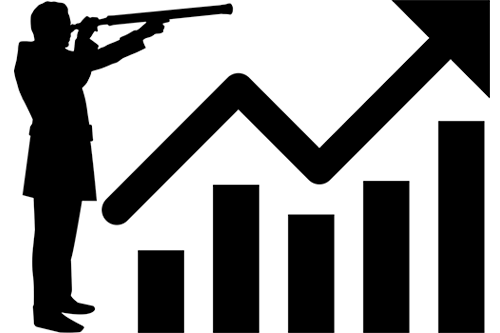Time Series Analysis
Connor Hill, Researcher
December 15, 2021

What is Time Series Analysis, and How is it Different?
One key way to analyze data is using time series analysis. Time series analysis allows researchers and data analysts to look at data that uses consistent time intervals to make conclusions on how the data has changed or use the data to make future predictions based on the data, otherwise known as forecasting. This type of analysis differs from more standard regression techniques that look at how two variables impact one another.
More standard regression techniques look at how a variable will impact one another or the independent variable's impact on the dependent variable. For instance, if we wanted to look at the relationship between teacher salary and student grades, a more standard regression, such as OLS, polynomial regression, etc., will attempt to find a relationship between the two. We may get a result that shows raising teacher salaries by X amount will result in a positive student grade by a certain percentage.
Time series analysis differs because it uses data over a time period (months, quarters, years, etc.) to estimate a future or unknown result. The most common way of thinking about time series analysis is forecasting (such as forecasting earnings for a company). However, this is not the limit to what time series analysis can do. For example, researchers can use time series analysis to estimate the effects that a particular change in a variable will have on another variable in the future. Additionally, if researchers were interested in looking at how a tuition increase would impact the enrollment rate at universities, a researcher would use a time-series analysis to analyze it.
What are some issues with time series analysis?
While time-series research can be powerful when used properly, one of the issues that researchers can come up against is the amount of data they need to do the analysis. Because time series analysis relies on data from previous observations, researchers would like to have as many observations as possible, which can be more challenging than you would initially think.
Let's think about economists and some of the data they use. If economists want to try and forecast the Gross Domestic Product (GDP) growth for a particular country, they can use previous GDP data to make a forecast. The problem is that GDP data is usually quarterly, so economists will only get four observations per year. To get enough data, economists will gather data from decades past, perhaps going back to the 1980s. So, as we can see, it can take a while for there to be enough data for researchers to feel as though the data they are working with is reliable.
Time series analysis can be a fun way to look at data and see how things change over the years, see how something may impact something else, or see how something may be in the future. Perhaps in a future blog post, I will talk more about time series analysis and how researchers use it. Until then, let us know how you have used time series analysis on Twitter @UTDataResearch.